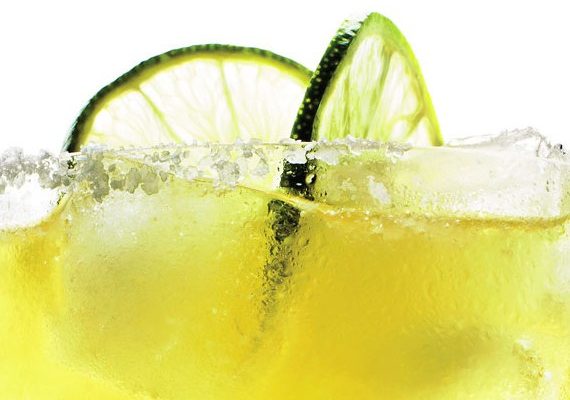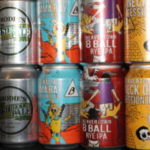The Best Margarita Recipe

BY CHRIS HALL
view original article here: http://www.bonappetit.com/drinks/cocktails/article/the-secret-to-a-perfect-margarita
For one drink
1 1/2 oz. tequila (100% agave a must, preferably a “reposado”)
1 1/2 oz. triple sec or Cointreau
1 to 1 1/4 oz. of lime juice
Salt for the rim of the glass
Shake all the ingredients with cracked ice in a cocktail shaker until the exterior frosts. Strain into a glass over rocks, or “up” into a cocktail glass. A slice of lime as a garnish, while not strictly necessary, is a civilized touch.
I think the reason these proportions work so well is the way I enjoy a margarita—as an accompaniment to food as opposed to a stand-alone cocktail. Were I to drink margaritas in the same time and place I drank, say, a martini or a Negroni, I would probably prefer a different—possibly more assertive, tequila-forward—mix. Instead the tequila should be dialed back into harmonious equilibrium with the other ingredients for a more quaffable potion. For the same reason I prefer them on the rocks, rather than “up.”
A few notes on the ingredients.
TEQUILA
Since the principal flavor of the margarita is the tequila, it’s important to make sure you’ve got the best stuff you can get your hands on, so look for the “100% de agave” legend on the label of your bottle. If it isn’t there, then up to 49% of your tequila is actually fermented cane sugar. And don’t let the “gold” in the name or in the liquid fool you; it’s caramel coloring added to make the colorless tequila more appealing. I like to use a “reposado,” which is (usually) a 100% agave tequila that has been aged in oak barrels for a minimum of two months (and up to a year). Unlike the “silver” tequilas, it has a mellower flavor, which I prefer.
TRIPLE SEC vs. COINTREAU
Then there’s the question of whether to use triple sec or Cointreau. Triple sec, a liqueur made from the skins of oranges, ranges in alcohol content from 15% to 30%, depending on the brand. Cointreau, a proprietary orange liqueur made from sweet and bitter orange skins, is stronger, at 40%. In a margarita the flavors are quite similar; it really comes down to how “boozy” you want your drink to taste (bearing in mind that a stronger-tasting drink may be less likely to be heedlessly guzzled). There is also Grand Marnier, but to my tongue its brandy base is a distraction, so I avoid it. I like the lush, perfume-y orange note in my margarita, so I add an amount equal to the tequila.
LIMES
And finally, to the limes. Unlike the reliable lemon (which can be substituted in a pinch, at the higher quantity), the flavor of limes can vary considerably depending on the variety, season, weather, and origin, so I have provided a quantity range. You should try to taste your lime juice first before you mix your drink. If you have an aggressively sour, caustic batch of the stuff, use the smaller quantity. The addition of lime should be a refreshing one, not something to make your throat burn.
(What was that insane bit in ba’s recipe about using key limes (rather than the standby Persian limes)? Key limes, first of all, are about the size of a large gumball, and it takes ages (and many, many key limes) to get the smallest amount of juice from them. And the flavor difference? None.)
One last note: if you’ve gone to the trouble to find all the best ingredients for your margaritas, you owe it to yourself to shake them with ice rather than toss it all in the blender. (I know you love them frozen Bridget, I’ll try not to look askance at you—much.) But a frozen margarita so effectively dulls the tongue with cold that it’s practically impossible to taste it (which is why it’s such a cash cow for the big Mexican food chains). Pour your margarita over ice, or strain it and drink it “up” (if you’re feeling elegant), to get the very most out of your labors.



![Edward & Graham – Menomonee Road [single]](https://www.crushbrew.com/wp-content/uploads/2017/02/AlbumCover3-2-150x150.png)












